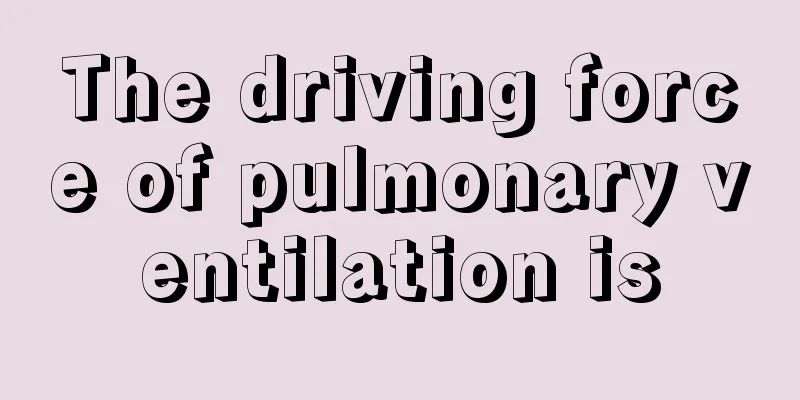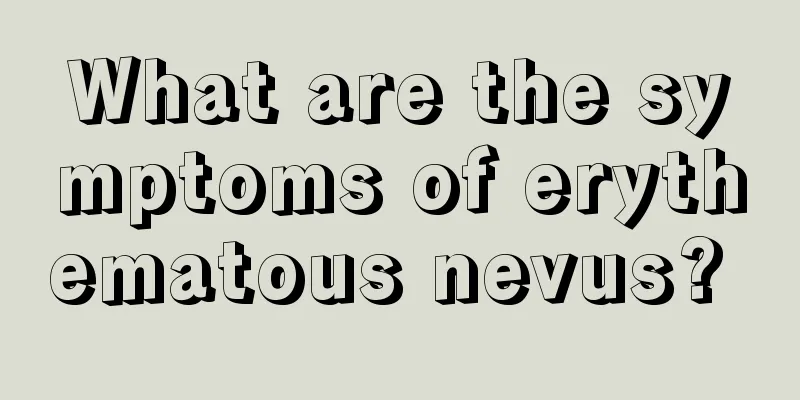The driving force of pulmonary ventilation is

|
Pulmonary ventilation in our lives is caused by abnormal air exchange between the lungs and the environment. For example, when we go to a place with thin air, we will experience altitude sickness and hypoxia. The air ventilated by the lungs is exchanged through the alveoli and respiratory tract, and then transported through the blood. This is the principle of the human respiratory system. The organs involved are the lungs, nasal cavity, alveolar blood, etc. Pulmonary ventilation is the process of gas exchange between the lungs and the external environment. The organs that enable lung ventilation include the respiratory tract, alveoli, and thorax. The respiratory tract is the channel that connects the alveoli with the outside world; the alveoli are the main place for the exchange of alveolar gas and blood gas; and the rhythmic respiratory movement of the thorax is the driving force for ventilation. principle To complete the gas transfer from the nasal cavity to the alveoli, and from the alveoli to the nasal cavity, power is required to overcome resistance. The pressure difference between the alveoli and the external environment is the direct driving force of pulmonary ventilation, and the relaxation and contraction of the respiratory muscles is the driving force of pulmonary ventilation. Alveolar resistance includes elastic resistance and inelastic resistance. power Overview The passage of gases into the lungs depends on the interaction of two factors: One is the driving force that pushes the gas to flow; the other is the resistance that prevents its flow. The former must overcome the latter in order to achieve pulmonary ventilation, just as the power of ventricular ejection must overcome the resistance of the circulatory system in order to promote blood flow. The movement of gases in and out of the lungs is due to the pressure difference between the atmosphere and the alveolar gas. Under natural breathing conditions, this pressure difference arises from the change in lung volume caused by the expansion and contraction of the lungs. However, the lungs themselves do not have the ability to actively expand and contract. Their expansion and contraction is determined by the chest. Static compliance curve of the lung (1cmH2O=0.098kPa) The expansion and contraction of the thorax is caused by the contraction and relaxation of the respiratory muscles. When the inspiratory muscles contract, the thorax expands, the lungs expand accordingly, the lung volume increases, the pressure inside the lungs temporarily drops and is lower than atmospheric pressure, and air enters the lungs due to this pressure difference, causing inspiration. On the contrary, when the inspiratory muscles relax and/or the expiratory muscles contract, the thorax shrinks, the lungs shrink accordingly, the lung volume decreases, the pressure inside the lungs temporarily rises and is higher than the atmospheric pressure, and the air in the lungs flows out of the lungs due to this pressure difference, causing exhalation. The expansion and contraction of the chest caused by the contraction and relaxation of the respiratory muscles is called respiratory movement. Respiratory movement is the driving force of lung ventilation. factor 1. Respiratory movement: The rhythmic expansion and contraction of the chest caused by the contraction and relaxation of the respiratory muscles is called respiratory movement. The main inspiratory muscles are the diaphragm and external intercostal muscles, and the main expiratory muscles are the internal intercostal muscles and abdominal muscles; in addition, there are some auxiliary inspiratory muscles, such as the scalene muscles, sternocleidomastoid muscles, etc. The breathing process: During calm breathing, inhalation is active and exhalation is passive, that is, the inhalation movement is caused by the contraction of the inspiratory muscles, while the exhalation movement is mainly caused by the relaxation of the inspiratory muscles and the elastic recoil of the lungs and thorax, rather than the contraction of the expiratory muscles. When you breathe forcefully, both your inhalation and exhalation are active. Forms of breathing movements: According to the priority of the respiratory muscles involved in breathing, it can be divided into abdominal breathing, thoracic breathing and mixed breathing; according to the degree of effort in breathing, it can be divided into calm breathing and exerted breathing. 2. Intrapulmonary pressure: refers to the pressure inside the alveoli. During inhalation, the pressure within the lungs is lower than atmospheric pressure, while during exhalation, the pressure within the lungs is higher than atmospheric pressure. At the end of inhalation and exhalation, the pressure within the lungs is equal to atmospheric pressure. The principle of artificial respiration is to artificially establish a pressure difference between intrapulmonary pressure and atmospheric pressure to maintain pulmonary ventilation. 3. Intrapleural pressure: the pressure inside the pleural cavity. During quiet breathing, whether inhaling or exhaling, the pressure in the pleural cavity is always negative. End of inspiration: -5 to ~10 mmHg, end of expiration: -3 to -5 mmHg. Once the airtightness of the pleural cavity is broken, air will enter the pleural cavity, forming pneumothorax, and the lungs will retract and collapse. Physiological significance of negative intrathoracic pressure: ①It is conducive to the expansion of the lungs; ② It is beneficial to the expansion of the vena cava and thoracic duct in the chest cavity, reducing central venous pressure and promoting the return of venous blood and lymph. |
<<: How to draw facial shadows
>>: Is B-ultrasound an ultrasonic wave?
Recommend
How should patients with bile duct cancer exercise
Cholangiocarcinoma is a malignant disease with gr...
Different water temperatures produce different washing effects
Taking a bath is essential for each of us. Differ...
Is pancreatic cancer puncture harmful?
There are many ways to check for pancreatic cance...
Symptoms of heart tumors
Patients with cardiac tumors may not have any sym...
What are the tips for cleaning range hoods
The range hood must be cleaned regularly, because...
Is it useful to take vitamin C for oral ulcers
If you have long-term oral ulcers, you should pay...
How widespread is the role of lysine?
Lysine is an essential mineral for the human body...
Can I use white vinegar mask every day?
Nowadays, many women choose to take care of their...
What are the symptoms of a cold
The two most common types of colds are wind-cold ...
What is the difference between conditioner and hair mask?
Hair masks and conditioner are very common hair c...
What's wrong with the soles of my feet?
Some people may accidentally find that they have ...
Dizzy after drinking but conscious
Drinking is a very traditional diet. Alcohol is a...
How many years can you live after liver cancer surgery? Look at these two aspects
How many years can a patient live after surgery f...
What medicine to take for rectal cancer bone metastasis
Rectal cancer refers to the cancer between the de...
Analysis of the causes of rectal cancer
At present, the causes of rectal cancer that have...









